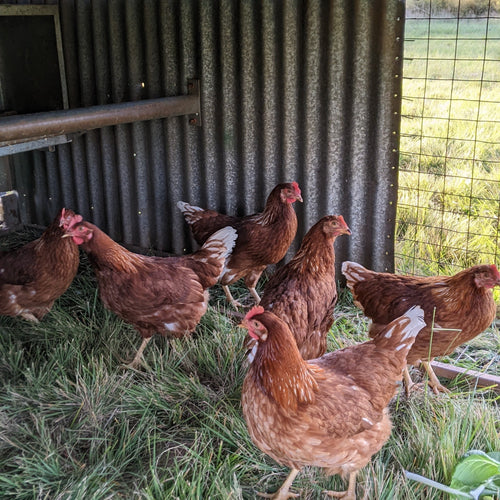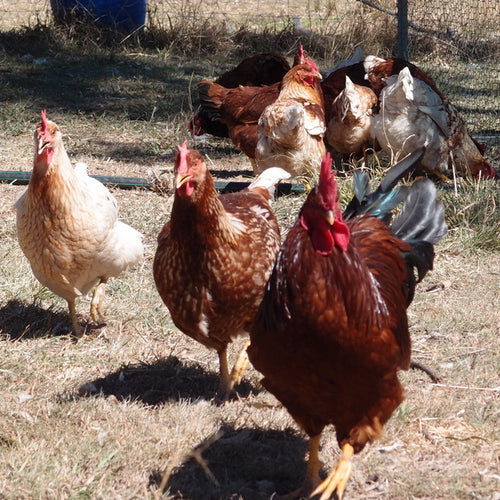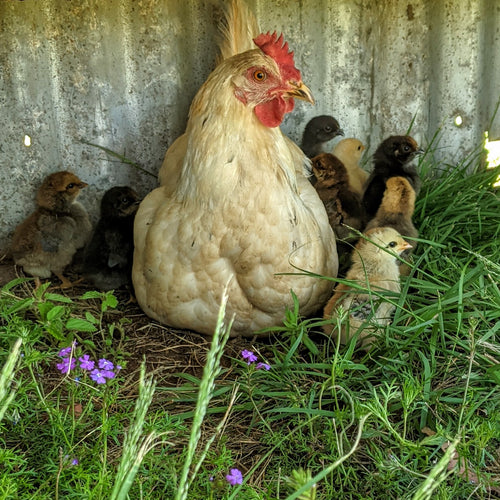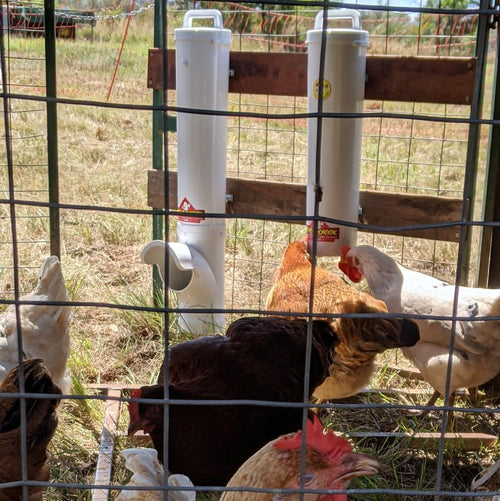How to use a chicken tractor
Chicken tractors are a great alternative to fixed chicken pens if you want to be able to move your chickens around on fresh pasture, while providing protection against predators. My eBook A Beginner's Guide to Backyard Chickens and Chicken Tractors has more detail about chickens and chicken tractors. Get your copy here.
 |
Chicken tractors are good for chickens
The main advantage of a chicken tractor is that you can move it around your pasture, so your chickens always have access to fresh grass and insects. If you can't free-range your chickens, a chicken tractor is the next best thing as it provide protection from predators and contains your chickens in a safe location.
Chicken tractors are good for soil fertility
We now keep all our chickens in movable chicken tractors (so called because the chickens till the soil a little as the cages are moved along). We are absolutely happy with this system and can see the trails behind the tractors as proof that they really do work to improve the soil.
The grass directly behind the chicken tractor will be very short (and sometimes down to the dirt) and then as you move away from the current location, to the areas that have been grazed earlier, you will see long, lush green grass. We have seen huge improvements in the two areas where we have kept the chicken tractors so far. We move the large tractors about once a week and the smaller ones more frequently.
Requirements for using a chicken tractor
 |
Problems with chicken tractors
The main problem we have with the chicken tractors is the chickens spilling food on the ground. When its time to move the tractor because all the grass has been eaten, there is often so much grain on the ground its tempting to leave the chickens there longer to finish eating it, but then the chickens will have no grass.
The grain is usually cleaned up by either the cattle or the dogs (dogs should not eat grain, it just comes out in their poo, but they won't listen) or wild birds if there's any left. I think it also attracts mice, and even though we move the tractors, we don't move them far each time, so it seems that the mice follow. We have tried a covered feeder that the chickens have to activate by stepping on a plate, but they didn't seem to like using it, and managed to spill heaps anyway!
 |
Water for chicken tractors
We keep the chicken water in buckets for the full-grown chickens, hanging waterers for the babies and shallow tubs for the in-betweens. We can leave six full-grown chickens with two buckets of water for several days. If we want to go away for a week, we just leave an extra bucket. We did think originally about incorporating the water dish into the design, but worried that it would be too heavy. The buckets are good as we can just carry a new bucket of water out to the tractor and swap it for an old bucket. The old water gets tipped on the garden.
 |
We currently have three large tractors and two small ones. We don't always have a full-house, but it can be very useful to have the extra tractors when we are raising young chicks, when we need to fatten roosters and if we have a broody or injured hen that needs some time to herself. We built the small tractors first and when we were happy with them, decided to move on to the larger ones so that we could get rid of our fixed pen completely.
| How to build a chicken tractor |
| How to use a chicken tractor |
| Chicken tractors vs fixed pens |
| Why you should consider using chicken tractors |
My eBook A Beginner's Guide to Backyard Chickens and Chicken Tractors has more detail about chickens and chicken tractors. Get your copy here.
























Leave a comment